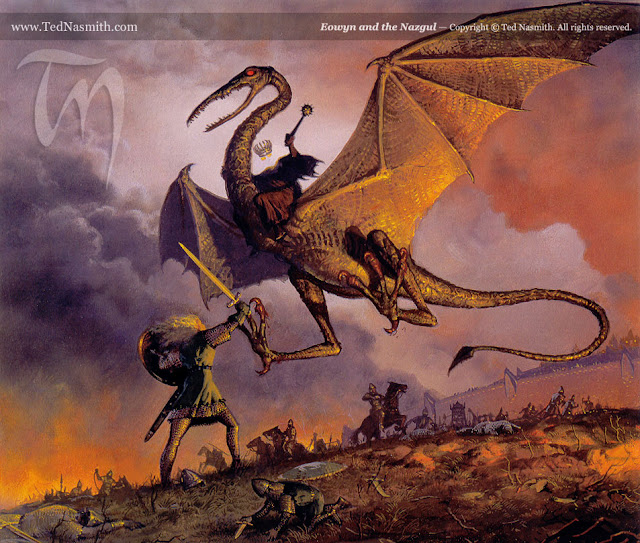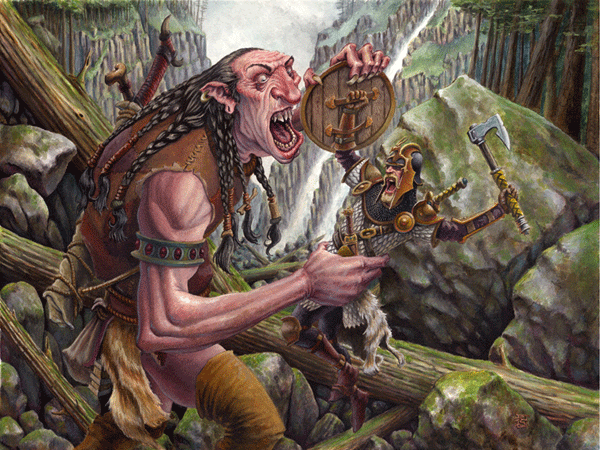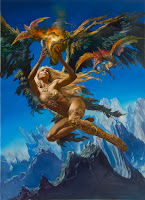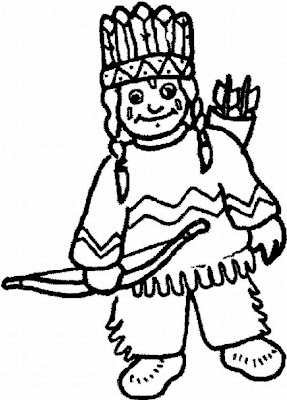A short while back I had the pleasure of meeting Tyler Jacobson, who until that point, I had simply referred to as "That-new-guy-who's-work-I-keep-seeing-everywhere". In just a few short years, Tyler has managed to make the transition from a talented student with a lot of potential, to a well published illustrator, receiving this past year's Jack Gaughan Award for Best Emerging Artist. Since so much of our audience here on Muddy Colors consists of young, aspiring illustrators, I thought it would be beneficial to have Tyler give you a first hand look at how he broke into the business.D&D and Me-By Tyler Jacobson
First off, I want to thank Dan for inviting me to post on Muddy Colors. I really enjoy following this blog. I thought I would share a little of my experience illustrating for D&D.
A little over a year and half ago I was introduced to an art director named Jon Schindehette by Irene Gallo. Irene had seen my work at the 2009 Spring Show for the Academy of Art University. A few weeks later Jon looked me up and we started chatting. He offered me a few pieces for Dragon Magazine, an e-publication for Dungeons and Dragons. Being my first big job out of school, I was all over it and attempted with all my power to assemble everything I had just learned over the past few years and apply it to actual professional work. In my head I wasn't sure if I was up to task.
Not too long ago I was a kid....and a nerdy one at that...but hey, there's no shame it. I loved sci fi and fantasy and was into a lot of the big games then. D&D and Magic were certainly big sellers and high on the list of “please, please, please buy me this book” cries my parents probably heard every other day. My brother was big into the gaming side of all of these brands. I was somewhat apathetic about that. Sure, I enjoyed getting out all the dice and books and weaving fun characters and adventures to go along with them, but most of the time I ended up sketching my hero in his ragged armor or staring at the manual's cover art while I waited for the other players to finished up their turns or argue with the DM about whether or not the troll could really “do that with his ax”. I'm not saying I was bored by the game, I was just more captivated by the art. I just couldn't stop looking at those gritty pen and ink drawings that filled most of the books at the time or trying to copy all the amazing illustrations in the Monstrous Compendium. I tracked down a few of those sketches and attempted copies a few years back and although they were clearly a child's work, they definitely illustrated my enthusiasm for fantasy art at the time. The D&D artist of those days really set me on a path. Most notably for me were guys like Jeff Easley, Tony DiTerlizzi, and Larry Elmore. I think I still have a lot of those books filled with their art. Safe to say I was pretty transfixed and it opened up many fantastic worlds for me.
So, years later I all of a sudden had the opportunity to actually work for these guys at Wizards of the Coast....I didn't really know what to do with myself but I tried to go in guns blazing and give them the best I could do. I am not sure if that happened but I completed a couple illustrations and they seemed to be enough to keep me going.
Over that past year and half, almost two now, Jon Schindehette and his other art directors have been keeping me nice and busy. I have happily been able to do pieces for both E-magazines, Dragon and Dungeon, as well as interiors for their print publications. Recently I have also been doing some cover which I will hopefully be allowed to show soon. All and all it has been fantastic and I hope to continue illustrating for D&D for as long as they will have me. Special thanks to Irene Gallo and Jon Schindehette.
-Tyler
A brief interview with our Guest Blogger, Tyler Jacobson:MC: When you say Irene introduced you to Jon, do you mean in person? Do you feel that having face to face time with Irene made any difference in her recommending you, as opposed to her having simply seen your work online?
TJ: Well, when I say Irene introduced me to Jon, I mean she introduced "my work" to Jon. I met Irene only briefly at my AAU Spring Show. I recall watching her from afar, a bit awestruck, as she took some quick photos of the pieces I had hanging on the wall. I friend whispered in my ear, "that's Irene Gallo" and I whispered back with a hushing tone, "I know" but really meant, "I know you idiot, why do you think I have this look on my face". Later I had a quick chat with her, Richard Solomon, and Michael Mrak, but I didn't really get to talk with her too long before the director of the AAU BFA Illustration program, Chuck Pyle, swept them all away to see some other stuff. It was a brief encounter but one I will never forget.
A few months later, I got an email from Jon. He said Irene had passed my work along to him, and luckily at that time, I had a blog and crud website set up. I think that ultimately saved me because I actually had all my work to date, professional posted and ready for viewing.
MC: What was Jon's first reaction to your work? Did he offer you a commission immediately, or did you need to do more samples?
TJ: His reaction sounded really positive. He told me that Irene had passed my work along to him and he was really impressed. Right then and there he told me he would like to offer me some D&D work. It was small stuff at that start. He said he didn't want to overwhelm me right away with my first D&D job and offered me two pieces for Dragon Magazine. I was expecting him to ask for samples though, when I read the first line of the message. I was told coming out school that this was somewhat common and I was surprised when he wanted me to jump right in. I was extremely excited of course.
MC: Have you met any other potential clients in this manner, be it through recommendations or in person at an opening?
TJ: Wizards was the only client I have acquired this way. Others I have had to either seek out, or they have found me through advertising and Richard Solomon. I did some work for Fantasy Flight Games when I was first starting out and I had to contact them about possible job opportunities. I was thrown a few bones but not too much. My real meat and potatoes has been D&D.
MC: Had you been soliciting for work prior to this opening, and did you have any success? If so, by what means of advertising did you feel was (and is) most successful for you? How has your means of solicitation changed over the years.
TJ: Before that opening, which was the Annual Academy of Art University Spring Show, I was still in school. So I hadn't really been solicited by any serious illustration clients at that time. I had done a little work here and there, most notably I did a series of still frame illustrations for a friend of mine who was producing a pilot sit-com for NBC. But that work is nothing like how I work now. Before that I had done a bit of fine art and pottery. As for my means of solicitation today, I mainly do advertising through my rep Richard Solomon in Workbook as well as non print mediums like theispot and Behance. This has been fairly successful. I have also entered my work into spectrum and was able to get a few pieces in Spectrum 17. For Sci Fi and Fantasy illustration I think that is a great, if not the best platform for getting your work seen.
MC: One often hears that the hardest part about getting work is getting your foot in the door. Do you feel this is true? Have things been easier since?
TJ: I would totally agree with this. From my experience it was very difficult getting any jobs before I was set up with Jon and Wizards of the Coast. I was searching everywhere and was very much about to head down the road of concept art for video games when I received that first message from Jon. I was very interested in the video game area of art. I had actually gone and interviewed with my portfolio at a few game companies in the Bay Area. My portfolio at the time was half illustration and half visual development work and I think that may have hurt my attempts to find work. But soon after that Jon contacted me for work and hit the ground running. I have both Irene and Jon to thank for that. Another hit came a few months after that when Richard Solomon called me back up, after having chatted months early at the Spring Show. I have been with Richard since then.

MC: How has your personal experience with the D&D game affected your current art. Do you feel that it provides you with any insight or inspiration that non-gaming artists may not achieve?
TJ: I wouldn't say there is any more inspiration in gaming art than in non-gaming art, but I personally have a special connection with it. It is something that was a really big part of my childhood so for me, my imagination runs wild with it. I think that is mostly how it affects my current art. I really brings out the kid in me. I am sure all illustrators have a specific subject that gets their creative juices running and for me that is Fantasy and Science Fiction.
MC: Have you played any campaigns with your work in it? How did your friends react?
TJ: I haven't played D&D in years. I think I was in 8th grade the last time I played. So I haven't seen my art in the active game. From time to time I will get a free copy of one the books my art is in and it is fun to see my work displayed with all the game facts next to it. That certainly brings me back to the illustrations I saw as a kid.
MC: Please tell us briefly about your process.
TJ: I work traditionally in oils and digitally using Photoshop and Corel Painter. Sometimes I combine the two. These days I mostly work digitally but I still love working in oils and do from time to time on a job, if the time allows for it. Usually when I draw it is traditional with either graphite or prismacolor. I love working on toned paper and because I have been doing a bit more digital drawing lately, I have been playing around with a method that imitates that.
As for process I guess it is pretty standard. I work with thumbs to start out and really try to play with compositions that way. I will usually do a rough pencil sketch and then bring that into Photoshop and really play around with values and composition. After that I will collect all the reference I need and start to work out a nice finished drawing. Most of the time I will take that drawing and do a full value study digitally. I can also do a quick color comp in the computer during this process. For my traditional and digital work, the process is the same up to this point.



Executing the finished traditional consists of me projecting that drawing onto a board or canvas. I have an opaque projector that mounts to my drawing table and projects down. Once I get the drawing down I am off. I'll usually tone the board with acrylic and paint that sucker in oils. Digital is basically the same thing for me, accept it is on the computer. When I work digitally I tend to paint as much as I can manually. I don't really like to use all the little fun tricks that Photoshop and Corel can achieve simply because I am after a more traditional look. I only have a few custom made brushes that basically look like a filbert or a flat but I am really just emulated a lot of what I already know about oil paints. Working traditionally has really given me a nice foundation that way. I think I am getting to a point where I can maintain that traditional look in my digital work to a certain extent but it is something I am always working on. Right now I am operating on a Cintiq monitor by Wacom which allows me to work directly onto the screen. I never really enjoyed the disconnect of the standard Wacom tablets. The Cintiq has really been a useful too..

MC: How long do you usually spend on a cover image? Does the time you allot yourself have to do with budget?
TJ: Budget and time is definitely something I think about. I am not trying to give the smaller jobs the shaft or anything. It is really all about time management. I do every job to the best of my ability of course, but if the job is smaller than I usually do the work smaller, thats all. I would prefer just to work smaller rather then work looser at a larger size. For a cover which is a nice big job when it comes to dollar signs, I will traditionally spend a couple weeks on it from start to finish. That is assuming I have that much time. That is the amount of time I would like to spend. I don't always get that. Working with D&D, I usually get around that amount of time and often time I get a bit more than that, which is great. The two weeks isn't for the whole painting though. It is all the preliminary work with sketches and reference and comps. The painting itself I try to do in a few days. I am impatient when it comes to the finish. I want to see it completed. That's probably a bad thing.
MC: Where do you see your work going in the near future? Do you plan to keep using mostly digital techniques? What other genres and venues would you like to explore. How are you going about these aspirations?
TJ: Well I am always pushing myself to do a better painting each time. So hopefully in the near future my paintings will be much better than they are now. Time will tell I guess. I don't know if I see myself working solely digital in the future. I really hope to do more oil paintings. I love having a nice original which is certainly a con with digital work. However, I am also very much interested in sculpture. I love sculpture and of the sculpture work I have done, it has been an amazing experience. Working in 3 dimensions is a real joy and I hope to be able to find a way to work that into my schedule as an illustrator. I will occasionally do a small sculpture for reference purposes but I really want to do something more in depth and finished.
MC: You mentioned some of your early influences. Who/what do you currently look to for inspiration?
TJ: Wow, that is a big question. I look at a lot of people. To many to count probably. I definitely take a close look at people who are doing work I really want to do. I try to see what they are doing successfully. Everyone on this blog are very big inspirations for me. In school I took a very close following to Greg Manchess's work which I really love. Other people I look at are Jaime Jones and Craig Mullins, two super awesome digital artists at the top of their game. I really love Jon Foster and Justin Sweet for their painting style and fantasy work. Specific game artists I love are Karl Kopinski, Paul Dainton, and from a little further back Kev Walker who also does amazing comic work. Also from the comic realm, I am a big Esad Ribic, Adam Hughes, Ales Ross and Paolo Rivera fan. Sculpture guys would include Mark Newman, Pablo Viggiano and Jordu Schell. All these guys are big sources of inspiration but list goes on and on I would say.
MC: With the growth of the internet, it seems that there are a lot more artists out there vying for the same jobs. How has someone in your generation been affect by the internet in regards to illustration? Do you feel it has made things harder, easier?
TJ: I would say it has made things a lot more intimidating. It is really easy to get lost in a sea of websites full of awesome work and wonder, "where are all these guys working....they are all awesome!" So in that respect I would say things are certainly psychologically harder. But I also think the internet has been very useful. Accessing artist's bodies of work is amazingly easy these days and I have always felt that it is impossible for an artist to work in a vacuum. Simply seeing other art helps dissolves that vacuum a bit. It allows for me to look around and see what is working and what isn't working. I can apply that to my own evolving work. There can be millions of artists websites out there with portfolios full of amazing work, but it may still not be getting around. I don't think just being on the internet is a guarantee that your work will be seen. You still need to do the leg work on advertising and find the right sites to showcase your work. So I guess things have changed but they are in many ways still the same.

Thanks again to Tyler Jacobson for taking the time to speak with us!
For more art, please check out Tyler's website at:
http://www.tylerjacobsonart.com/

























































